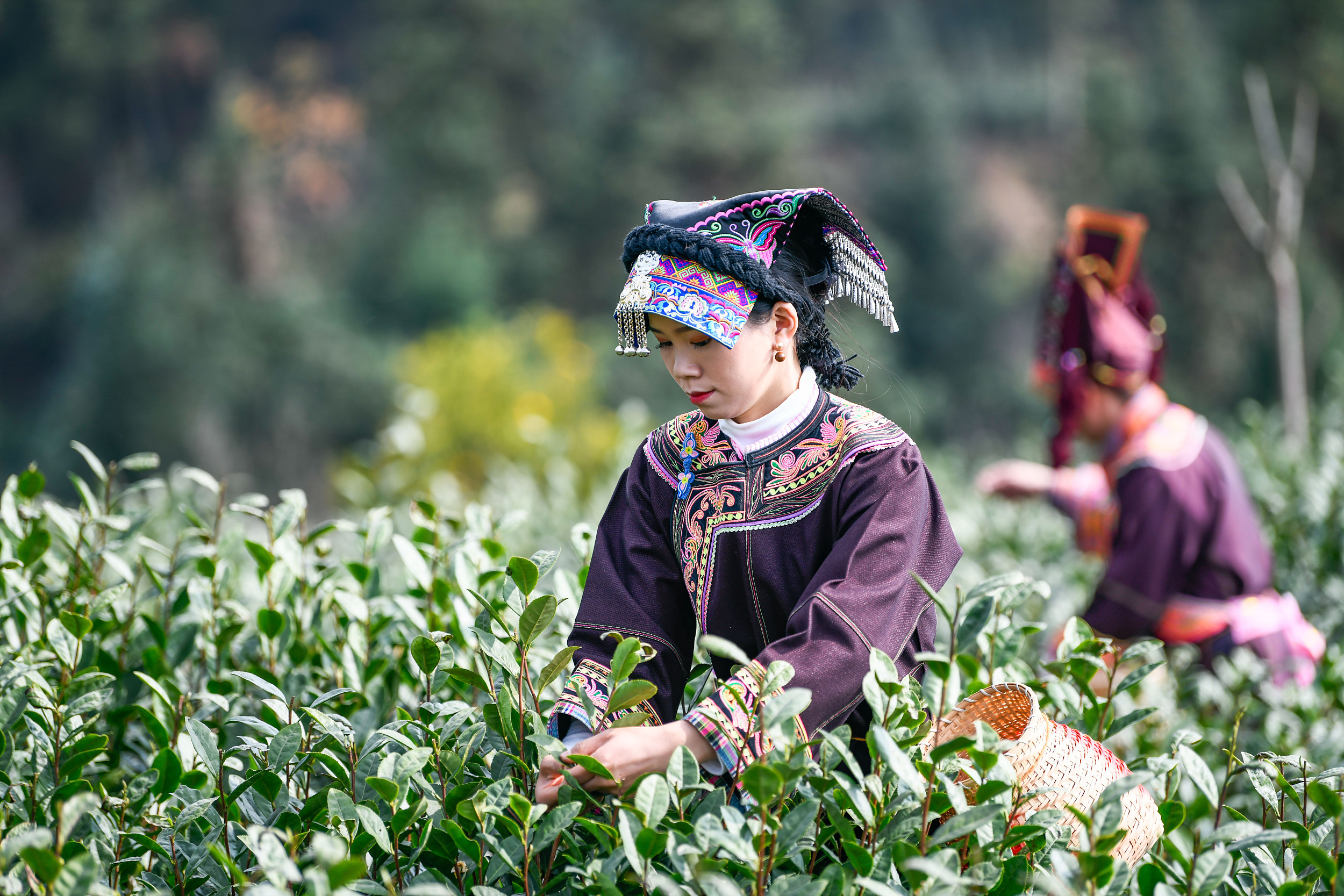Sipping Green Tea in Spring

Tea farmers dressed in local costumes pick green tea leaves in Guizhou province, southwest China. (PHOTO: VCG)
By ZONG Shihan
For tea enthusiasts, the changing of seasons is a prelude to the much awaited first cup of spring tea. Sipping fresh green tea in early spring seems to physically herald the arrival of the season of blossoms. Among all tea categories, green tea is the first to hit market shelves each year, and the most produced and consumed tea in China, accounting for 50-60 percent of total tea sales.
China boasts the widest variety of green teas in the world. In terms of leaf shape, there is the flattened West Lake Longjing tea, the spiral-shaped Biluochun tea and Bamboo leaf green tea, as well as the strip-shaped Huangshan Maofeng tea and Xinyang Maojian tea.
Green tea is the earliest type of tea in history. Ancient Chinese collected wild tea leaves, dried and stored them, which can be considered the beginning of green tea processing in a broad sense, dating back at least 3,000 years. However, true green tea processing began in the 8th century with the invention of the steam fixation technique, followed by the stir fixation technique in the 12th century. Since then, green tea processing techniques have continued to improve.
The basic processing steps for green tea are fixation, rolling and drying. Fixation involves using high heat to deactivate enzymes in the fresh leaves, crucial for the formation of green tea's unique character. Rolling tightens the tea leaves and squeezes out their juices, enhancing their flavor when brewed. The final drying step removes moisture from the leaves at high temperatures and further promotes thermo-physical and chemical changes.
As an unfermented tea, green tea retains a significant amount of natural substances from its fresh leaves. Its content of tea polyphenols and caffeine retains over 85 percent of the fresh leaves, while chlorophyll retains about 50 percent, and vitamin loss is relatively low. This has special effects in anti-aging, anti-cancer, sterilization, and anti-inflammatory properties, surpassing those of fermented teas.







